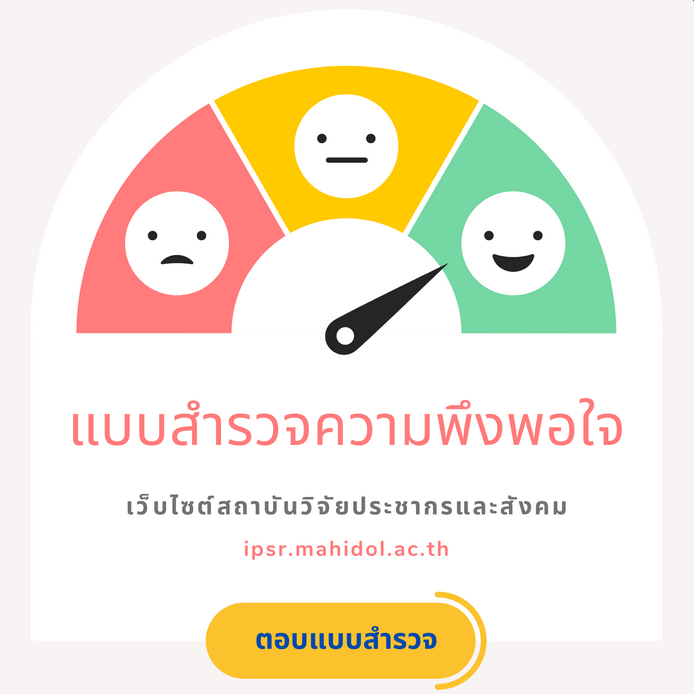|
|
Objectives |
| IPSR publishes the "Mahidol Population Gazette" in January annually in both Thai and English versions to disseminate estimated population indicators. All figures are updated each year based on the most recent information available. Therefore, the data in the "Mahidol Population Gazette" of different years should not be analyzed to determine population trends. |
Mahidol Population Gazette |
| Population of Thailand, 2018 (Vol.27 : January 2018) | ||||
| Estimated Population at Midyear 2018 (1st July) | ||||
Male |
Female |
Total |
||
| 1. | Total Population (x 1,000) | 32,454 | 33,780 | 66,234 |
| 2. | Population by Area of Residence (x 1,000) | |||
| Urban area (population living in all types of cities and municipal areas) | 16,209 | 16,947 | 33,156 | |
| Rural area (population living outside urban areas) | 16,245 | 16,833 | 33,078 | |
| 3. | Population by Region (x 1,000) | |||
| Bangkok Metropolis | 4,006 | 4,254 | 8,260 | |
| Central (excluding Bangkok Metropolis) | 9,339 | 10,751 | 19,090 | |
| Northern | 5,514 | 5,723 | 11,237 | |
| Northeastern | 9,169 | 9,489 | 18,658 | |
| Southern | 4,461 | 4,589 | 9,050 | |
| 4. | Population by Age Group (x 1,000) | |||
| Children (under 15 years) | 5,885 | 5,541 | 11,426 | |
| Labor force (15-59 years) | 21,256 | 21,782 | 43,038 | |
| Elderly (60 years and over) | 5,313 | 6,457 | 11,770 | |
| Elderly (65 years and over) | 3,498 | 4,421 | 7,919 | |
| Pre-school ages (0 – 5 years) | 2,246 | 2,131 | 4,377 | |
| School ages (6-21 years) | 6,830 | 6,439 | 13,269 | |
| Women of reproductive age (15-49 years) | 16,598 | |||
| 5. |
Life Expectancy at Birth (average number of years a person could expect to live after birth) |
Male 72.2 years Female 78.9 years |
||
| 6. |
Life Expectancy at Sixty (average number of years a person could expect to live after age sixty) |
Male 20.2 years Female 23.6 years |
||
| 7. |
Life Expectancy at Sixty-five (average number of years a person could expect to live after age sixty-five) |
Male 16.5 years Female 19.5 years |
||
| 8. | Vital Rates | |||
| Crude birth rate (per 1,000 population) | 10.7 | |||
| Crude death rate (per 1,000 population) | 8.3 | |||
| Natural growth rate (percent) | 0.2 | |||
| Infant mortality rate (per 1,000 live births) | 9.8 | |||
| Child mortality ratio (per 1,000 live births) | 16.2 | |||
| 9. | Total Fertility Rate (average number of children a woman would have throughout her reproductive years) | 1.58 | ||
| 10. | Contraceptive Prevalence Rate (percent) | 78.4 | ||
| 11. | Estimated Numbers of Older Person with Dementia (x 1,000) | 222 | 448 | 670 |
Sources of Data |
|
Notes on data |
|
